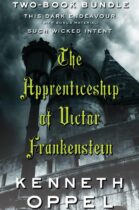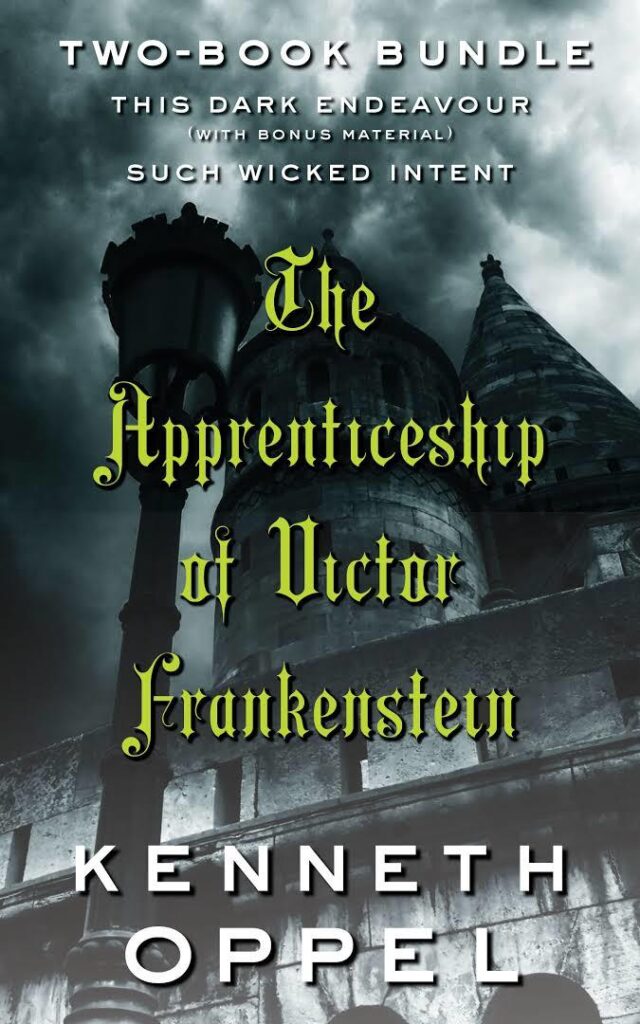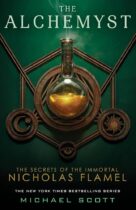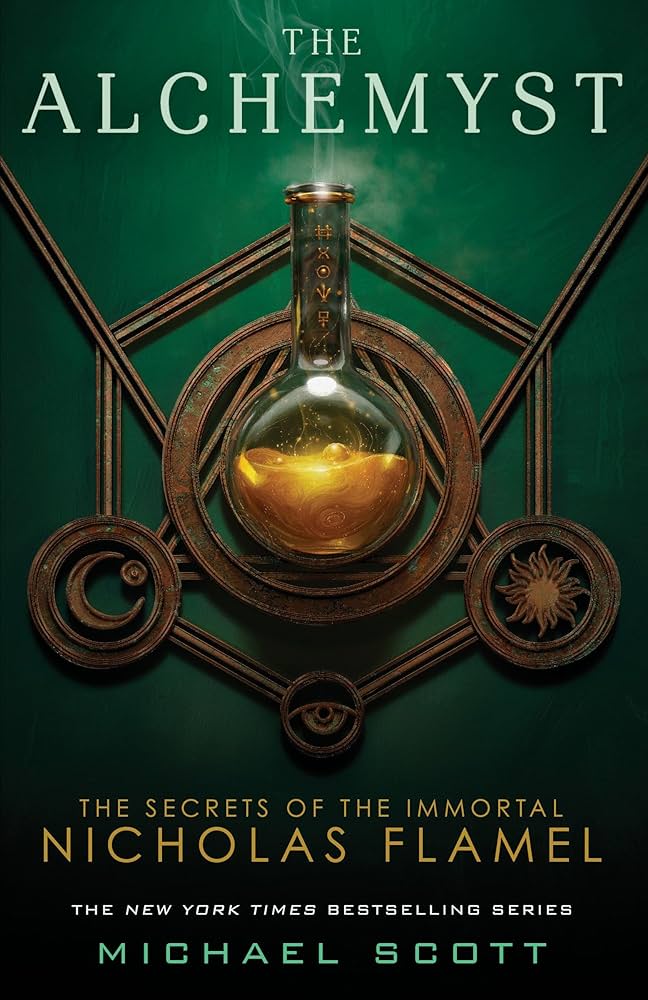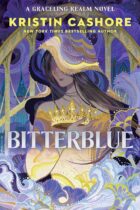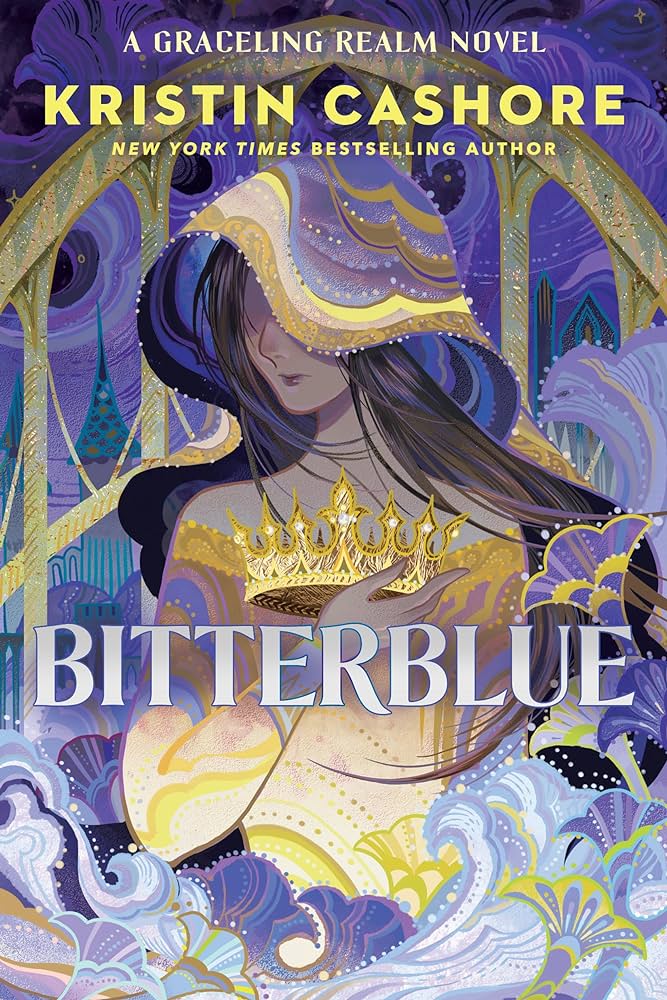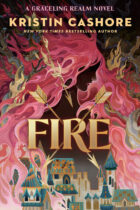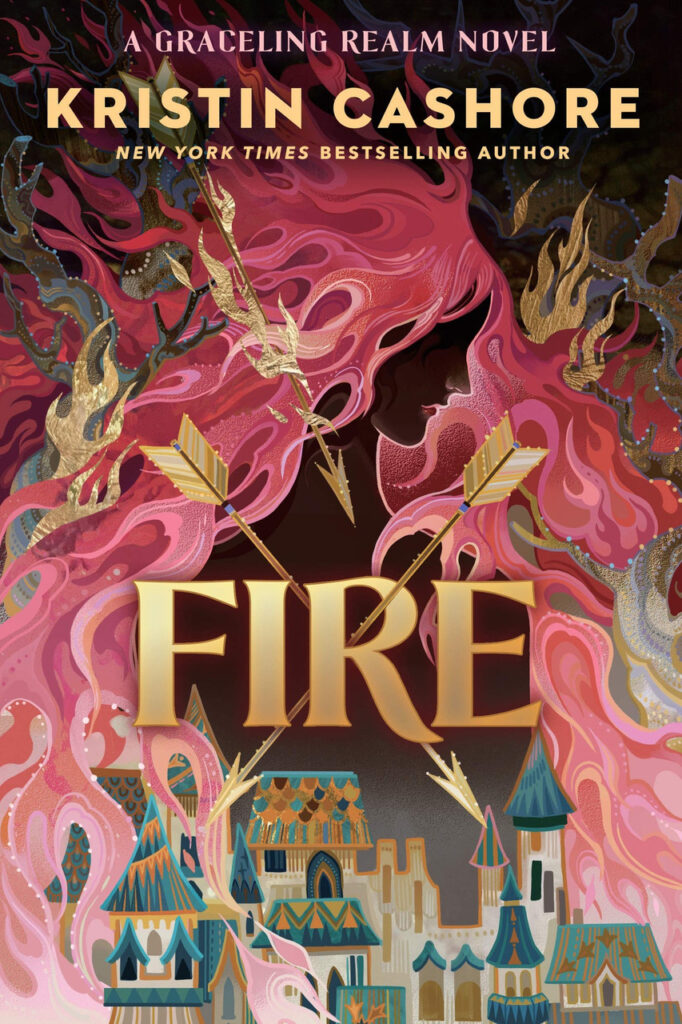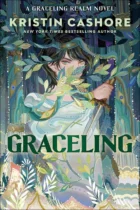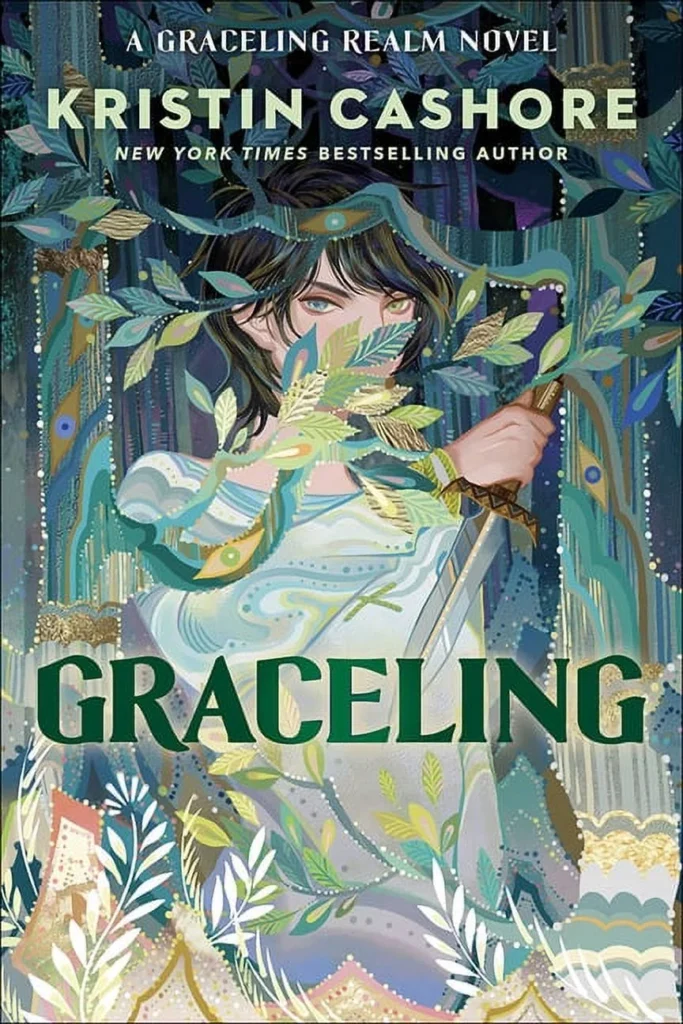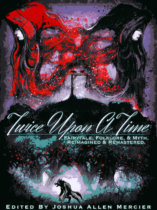
Fairytale, Folklore, & Myth. Reimagined & Remastered.
FAIRYTALES don’t always happen once upon a time. Fables don’t always have a happy ending. Sometimes the stories we love are too dark for nightmares. What if waking Sleeping Beauty was the worse thing the Prince could have done? What if Rapunzel wasn’t in that tower for her own protection—but for everyone else’s? Assembled by The Bearded Scribe Press, Twice Upon A Time combines classics and modern lore in peculiar and spectacular ways. From Rapunzel to Rumpelstiltskin, this unique collection showcases childhood favorites unlike anything you’ve ever seen. Both traditionally-published and independent authors will take you on a whirlwind ride through fairytale and folklore, myth and majick. Cherished stories are revisited and remastered into newly-treasured tales of hope and heartache, of adversity and adventure.
Featuring stories from Bo Balder, AJ Bauers, Carina Bissett, Rose Blackthorn, S.M. Blooding, Rick Chiantaretto, Richard Chizmar, Liz DeJesus, Court Ellyn, S.Q. Eries, Steven Anthony George, Dale W. Glaser, Jax Goss, K.R. Green, Kelly Hale, Tonia Marie Harris, Brian T. Hodges, Tarran Jones, Jason Kimble, Shari L. Klase, Alethea Kontis, Hannah Lesniak, Wayne Ligon, RS McCoy, Joshua Allen Mercier, Robert D. Moores, Diana Murdock, Nick Nafpliotis, Elizabeth J. Norton, Bobbie Palmer, William Petersen, Rebekah Phillips, Asa Powers, Joe Powers, Brian Rathbone, Julianne Snow, Tracy Arthur Soldan, C.L. Stegall, Brian W. Taylor, Kenechi Udogu, Onser von Fullon, Deborah Walker, Angela Wallace, and Cynthia Ward. Edited by Joshua Allen Mercier. Cover artwork by Luke Spooner.
A Mythic Fiction reimagining of the epic poem Beowulf
Gudrun feels the weight of her father’s disappointment and resentment toward her, stemming from her physical differences from her sisters and her perceived inadequacies. Despite her efforts to please her parents, Gudrun is met with disdain and mistreatment. As events unfold, Gudrun finds herself at the center of a disturbing ritual involving sacrifice, which ultimately leads to her escape and discovery of her true identity as a member of a mysterious and misunderstood group known as the Grendels. With newfound clarity, Gudrun resolves to embrace her heritage and forge her own path forward.
A Space Opera reimagining of Benjamin Talbart’s Jack and the Beanstalk
A thrilling science fiction tale centered on Jack, an Obsolete Engineer with a penchant for self-deprecation and humor, facing what he believes is certain death. As he prepares for a high-risk mission involving a beanstalk-like device for interstellar travel, he humorously imagines his own eulogy, highlighting his exceptional skills and good looks. Unexpectedly, Jack finds himself in a series of dangerous and bizarre situations involving intergalactic creatures, advanced technology, and a struggle for survival. His journey is filled with twists, including a unique alien encounter, and showcases his ingenuity and bravery in the face of overwhelming odds. The narrative weaves together themes of courage, friendship, and the unexpected heroism found in the most unlikely individuals, all set against the backdrop of a richly imagined futuristic universe.
A Dark Contemporary Fantasy reimagining of Hans Christian Andersen’s The Red Shoes
A captivating tale of Karen, a woman ensnared by the allure of a pair of enigmatic red shoes she discovers in a vintage store. Despite leading a controlled and mundane life, Karen is inexplicably drawn to these shoes, which symbolize a vibrant and untamed aspect of existence she has long repressed. The shoes propel her into a whirlwind of experiences, culminating in her attendance at the Burning Man festival, where she finally confronts and releases her deep-seated fears and desires. The narrative beautifully weaves together themes of freedom, transformation, and the power of self-liberation through the symbolic act of dancing, ultimately leading Karen to embrace the complexity of her own identity beyond the confines of her previously rigid lifestyle.
A Post-Apocalyptic Contemporary Fantasy reimagining of the Scottish folktale The Selkie Bride
Rose Blackthorn weaves a poignant tale of love and loss between Jordon, a man from a post-apocalyptic settlement, and Naia, a mysterious woman with a deep connection to the sea. As the seasons change, their bond deepens, revealing Naia’s true nature and her inevitable return to the ocean to fulfill a duty to her diminishing people. The story culminates in a heartrending departure, leaving Jordon with a promise of a child born of their love but destined for a life beneath the waves. This narrative explores themes of sacrifice, the enduring power of love, and the intersection of human and mythic worlds, set against a backdrop of a world struggling to rebuild from the ashes of its past.
A reimagining of Lewis Carroll’s Alice’s Adventures in Wonderland with
Steampunk, Alternate History, and Dark Fantasy elements;
inspired by and set within her Dream Killers Series
The transformative journey of Red, a woman scarred by the tragedies of war and loss, as she navigates the fantastical and tumultuous landscape of Dreamland. Tasked with rescuing a lost child in a realm where her sister reigns as the White Queen, Red grapples with her inner darkness and the remnants of hope within her. Accompanied by the enigmatic Hatter, Red confronts the twisted manifestations of her own pain and discovers her capacity to bring change to Wonderland. Through encounters with whimsical and eerie entities, and the confrontation with her own despair, Red embarks on a path of redemption and self-discovery, challenging the boundaries of her own identity and the very fabric of Wonderland itself.
A Dark Fantasy reimagining of Hans Christian Andersen’s The Emperor’s New Clothes
A dark and captivating narrative that follows a king haunted by a nightmarish presence, as he grapples with the reality of his power and the haunting consequences of his reign. After experiencing disturbing dreams involving a mysterious little girl named Eden, the king’s sense of reality begins to unravel, leading him into a surreal and terrifying journey. With the kingdom preparing for his procession to claim the throne of England, he encounters two tailors, Vladimir and Balor, who present him with a revolutionary set of clothes woven with finely spun steel, promising protection and fear-inducing power. However, as the procession unfolds, the king is confronted by startling revelations about his own fate and the true nature of the world around him. This tale weaves a complex fabric of ambition, guilt, and the supernatural, culminating in a chilling climax that questions the very essence of power and redemption.
A Post-Apocalyptic reimagining of the ballad of Robin Hood
A poignant story set in a post-apocalyptic world, where a man seeking stories of survival encounters an old, blind man with a profound tale to tell. The narrative unfolds as the old man recounts the harsh realities of life after nuclear devastation, detailing the struggle for survival in a West Virginia town spared from the worst of the bombs. He speaks of the early days of scavenging and solidarity, the dangers posed by outsiders, and the emergence of a cruel city named Camelot, whose inhabitants prey on survivors. The old man and his friend, Joseph, a former officer of Camelot turned ally, embark on dangerous missions to intercept raiding parties, redistributing stolen supplies to those in need, inadvertently becoming legends akin to Robin Hood. The story takes a deeply personal turn as the old man reveals his connection to the visitor, bridging the past’s hardships with a moment of reconciliation and familial reconnection, underlining the enduring human spirit amidst desolation.
A YA Fantasy reimagining of the Grimm Brothers’ The True Bride and set within her Frost Series
Jane, a young woman burdened by her cruel stepmother Clothilde, is unexpectedly aided by a kind old woman with magical powers. After enduring impossible tasks set by Clothilde, Jane is gifted a castle by the old woman’s magic. Jane’s happiness is short-lived when she falls in love with Prince Stephan, only to have him disappear on the eve of their engagement. Devastated, Jane abandons her riches to search for him, only to find Stephan engaged to another. Refusing to give up, Jane attends a ball to reconnect with Stephan, leading to a revelation of enchantment and betrayal. With the old woman’s guidance, Jane breaks the spell on Stephan, confronting the truth about their love and setting the stage for a new beginning together, away from the manipulations that kept them apart.
A Dark Historical Fiction reimagining of the ballad Twa Sisters
Court Ellyn tells the haunting story of Angharad, who is plagued by the memory of her sister Gwyneth’s tragic death in the floodwaters. Amidst the backdrop of May Day celebrations and family expectations, Angharad struggles with her own guilt and the favoritism shown by her father towards Gwyneth. The arrival of a bard, Nissyen ap Hedydd, with a mysterious harp rumored to be made from human bones, exacerbates Angharad’s turmoil. As Nissyen’s music fills the air with a ballad eerily reflective of Gwyneth’s death, Angharad’s guilt and fear of retribution spiral, leading her to a fateful confrontation with Llyr, her husband, whom she perceives as complicit in her misery. The story culminates in a chilling resolution by the river, where Angharad seeks an escape from the haunting echoes of her past actions and the looming specter of her sister’s death.
A YA Contemporary Mythic Fiction reimagining of Achilles on Skyros and Homer’s Iliad
A modern retelling of the Achilles myth set in an all-girls preparatory school. The protagonist, Keelie, is actually Achilles disguised as a girl by his mother, Thetis, to avoid the prophecy of his early death in war. His true identity is revealed when the school is attacked by soldiers led by Odysseus, who need Achilles for the Trojan War as foretold by an oracle. Despite initial reluctance and the pain of leaving his close friend Deirdre and confronting his distant mother, Achilles accepts his destiny and joins the soldiers, acknowledging his need for a life with purpose beyond the confines of his hidden identity. The narrative explores themes of fate, identity, and the struggle between personal desires and destiny, all set against the backdrop of a contemporary school setting.
A Supernatural Fantasy reimagining of Boccaccio’s The Story of Griselda
A haunting tale of a woman named Griselda who finds herself ensnared in a surreal and dark existence after marrying Dr. Walter Salvatore, a man with sinister affiliations and intentions. Once an avid reader and dreamer with a passion for sewing, Griselda’s life transforms into a nightmarish captivity where she is subjected to bizarre rituals, including a grotesque wedding ceremony that binds her to her husband and his malevolent “Masters.” Her role as a wife becomes a harrowing ordeal of tests, sacrifices, and the bearing of children only to have them taken away, as part of a macabre pact with her husband’s demonic associates. Over time, Griselda becomes isolated and disoriented, her sense of reality blurred between wakefulness and dreams, as she clings to the vestiges of her identity through the flickering light of candles, likening herself to a Rapunzel trapped not in a tower but in a twisted, infernal version of home, where the lines between devotion, survival, and madness blur.
A Dark Science Fiction reimagining of Hans Christian Andersen’s Thumbelina
The harrowing science fiction story about Melise, a woman who awakens in a surreal laboratory with no memory of her identity, save for her name. As she navigates through a series of bizarre and terrifying encounters with oversized laboratory animals and a mysterious, gigantic laboratory setting, she grapples with fragments of memories and a profound sense of dislocation. The story reaches a climactic twist when she discovers that she is a clone, repeatedly brought back to life by her partner in increasingly smaller sizes to combat cellular decay, with each resurrection stripping away more of her memories and identity. The narrative explores themes of identity, memory, ethical boundaries in scientific pursuit, and the essence of selfhood, all set against a backdrop of a deeply unsettling, Kafkaesque experiment gone awry.
A Contemporary Fantasy reimagining of Hans Christian Andersen’s The Snow Queen
A modern adaptation of the classic tale of Gerda and Kai, intertwined with the legend of the Snow Queen. In this version, Kai experiences a mysterious pull towards a cold, enigmatic woman who represents the allure of winter and its ruthless beauty. Gerda, Kai’s steadfast partner, notices his strange behavior and a growing obsession with snow, reminiscent of a childhood fear of the Snow Queen’s enchantment. As winter deepens, Kai’s attraction to the snow woman intensifies, leading to a confrontation that reveals deep-seated memories and a forgotten encounter with the Snow Queen from their childhood. Gerda, with the help of their friend Vilda and the symbolic strength of summer and warmth, fights to reclaim Kai from the Snow Queen’s grasp. The story explores themes of memory, choice, and the enduring power of human connections over cold magic, culminating in a poignant battle for Kai’s soul between the warmth of human love and the seductive chill of eternal winter.
A Mythic Fiction reimagining The Tale of Taliesin from The Mabinogion
The story follows Morfran, a young man grappling with the heavy expectations placed upon him due to his lineage and his perceived failures. His mother, Ceridwen, concocts a potion called Awen, intending for Morfran to drink it and become a king. The story takes a dark turn when the potion, meant to enhance Morfran’s abilities, ends up in the hands of a young boy named Gwion, leading to a series of magical transformations. As Ceridwen pursues Gwion with murderous intent, Morfran is torn between his loyalty to his mother and his sense of justice. The tale weaves through themes of destiny, familial duty, and the pursuit of personal identity against the backdrop of Welsh mythology, culminating in Morfran’s realization of his mother’s betrayal and his quest for redemption and self-discovery among the Druids.
A Historical Science Fiction reimagining of Jeanne-Marie Leprince Beaumont’s Beauty and the Beast
The story of a young woman whose life takes an extraordinary turn when her father returns from a journey with a fantastical tale of survival against man-eating little people and a life-saving encounter with an Ice Giant. As part of a mysterious deal, she is claimed by the Ice Giant, who turns out to be a fur-trading white man bearing gifts for her people. However, the trader is not what he seems, and the woman is taken to a place of magic and technology far beyond her understanding. Through her journey, she discovers the true nature of her husband and his people, who are desperately seeking a cure for a terrible sickness that afflicts their land. The story weaves elements of Native American folklore with themes of sacrifice, discovery, and the clash between ancient traditions and incomprehensible foreign technologies, culminating in the woman’s acceptance of her role in a mission that transcends her initial understanding and fears.
A Historical Paranormal Fantasy reimagining of a legend from the Zohar & Grimm Brothers’ The Rose
The poignant narrative set against the backdrop of the Holocaust, centered around Rebecca, a young girl who finds a glimmer of hope in a rosebud given to her by a ghostly apparition of a child in a concentration camp. The story intricately weaves the horrors of life in the camp, marked by dehumanization and brutalities, with a thread of supernatural resilience and hope symbolized by the rose. As Rebecca and the other prisoners endure the unimaginable, the rosebud, untouched by the surrounding despair, becomes a beacon of hope and a silent promise of deliverance. The narrative builds towards a climactic revelation tied to an old Jewish saying about roses and thorns, culminating in a powerful testament to the enduring human spirit and the belief in justice and redemption, even in the face of overwhelming darkness and evil.
A Magical Realism reimagining of the Scottish fairy ballad Tam Lin
A compelling urban fantasy tale that follows Maggie, a street-savvy young woman who navigates a dark, dangerous world where the lines between reality and otherworldly realms blur. On a fateful night, Maggie encounters a mysterious, fading man in a magical forest that materializes in the heart of the city. This encounter leads her into a whirlwind of events that challenge her understanding of reality, love, and her own strength. As Maggie grapples with the implications of a magical pregnancy, she must confront the malevolent queen of shadows in a climactic battle to secure her freedom and the safety of her unborn child. The story weaves themes of personal resilience, the power of belief, and the indomitable human spirit, culminating in Maggie’s transformative journey from a life of solitude to one of purpose and hope.
A Paranormal Fantasy reimagining of King Midas & the Grimm Brothers’ The Girl with Silver Hands
A captivating fairy tale that follows the journey of Sigrun, a young woman with the magical ability to turn objects into gold, a gift she must keep hidden. When her father, driven by greed, attempts to sell her to the cruel Junker Risteard Von-Hislenad, Sigrun’s life takes a dramatic turn. An angel intervenes, guiding her to safety and into the arms of Prince Alarik, with whom she falls deeply in love. Their happiness is threatened by war and the machinations of Von-Hislenad, leading to a gripping tale of love, betrayal, and divine intervention. As Sigrun navigates her new royal life, confronts her enemies, and embraces her destiny, the story unfolds into a rich tapestry of courage, resilience, and the enduring power of love against the backdrop of a kingdom filled with intrigue and danger.
A Historical Paranormal Fantasy reimagining of the tall tales of American Folklore
A riveting story set in a rugged, mythical landscape, following Elsie Winston’s quest for survival and identity. Born to a community living in the shadow of legendary giants and tasked with a dangerous mission to retrieve the famed Oakley’s gun, Elsie’s journey is fraught with challenges that test her resolve and self-understanding. Along the way, she encounters Slue-foot Sue, a formidable and enigmatic figure with her own complex past and ties to the legendary Pacos Bill. As Elsie grapples with the harsh realities of her world and the prejudices she faces, she discovers strength and purpose, challenging the narratives imposed upon her by others. Through encounters with supernatural dangers and revelations of untold stories, Elsie’s quest becomes not just a mission for survival, but a journey of self-discovery and defiance against a world that seeks to define her by its own limiting tales.
A YA Fantasy reimagining of Charles Deulin’s The Enchanted Canary
The enchanting tale of Princess Adrienne, who finds herself trapped in a dire situation where her freedom and happiness are compromised by her stepmother’s greed and sorcery. Forced into an arranged marriage to save her kingdom from financial ruin, Adrienne attempts to escape but is transformed into a bird and then imprisoned within an orange by her stepmother’s magic. Meanwhile, Prince Desire, equally uninterested in an arranged marriage, dreams of a girl unlike any in his kingdom and sets off to find her, inadvertently discovering Adrienne. Their meeting ignites a series of magical events that lead to Adrienne’s liberation and the defeat of the wicked stepmother. In the end, Desire and Adrienne’s genuine love triumphs, promising a future of love, freedom, and adventure, far removed from the constraints of their pasts.
A Dark Paranormal Romance reimagining of Hans Christian Andersen’s The Little Mermaid
The tragic and transformative journey of a deep-sea creature entwined with the fate of a human maiden, bound by love’s profound and perilous power. Living in the depths, the protagonist is drawn to the surface world by the desperate plea of a brave sea maiden, whose love for a human compels her to seek a drastic change. This encounter ignites a chain of events, leading to a dark pact that transforms the sea maiden into a human, but at a grave cost. As she navigates the complexities of human emotions and society, her quest for love becomes a harrowing odyssey of survival, identity, and sacrifice. The narrative weaves a rich tapestry of love’s duality, capable of both salvation and destruction, ultimately questioning the true nature of freedom and the price one is willing to pay for it.
A Magical Realism Romance reimagining of Hans Christian Andersen’s The Steadfast Tin Soldier
Hannah Lesniak weaves a poignant tale of an antique ballerina figurine, forever fixed atop her glass mirror, observing the evolving world of toys around her. As the last remnant of the Old Regime, she witnesses the lively interactions of the New Regime toys, unable to partake due to her immobility and attachment to the mirror. Her existence is marred by the unwanted attentions of Jack, a boastful toy from the New Regime, who declares his affection for her despite her indifference. The arrival of a soldier toy, flawed yet beautiful in her eyes, offers her a glimpse of companionship and connection, only to be cruelly snatched away by the reckless actions of a child and the malice of Jack. As the story culminates in a tragic but liberating act of sacrifice, the figurine finds solace in her unwavering love for the soldier, choosing to join him in destruction rather than endure a life of isolation and longing. The narrative beautifully explores themes of love, resilience, and the yearning for freedom, all set within the enchanting and often overlooked world of children’s toys.
A Science Fiction reimagining of John Green Chandler’s The Remarkable Story of Chicken Little
A harrowing narrative set in a future where the Terran Unity governs humanity, and psi-guards with telepathic abilities ensure its continuity. Private Ethan Little, a member of the psi-guard with a rare foretelling gift, is haunted by a recurring nightmare of apocalyptic destruction that he fears may be prophetic. When he shares this vision with his Senior and other psi-guards, the chilling truth is unveiled by Commander Fox: an asteroid has been set on a collision course with the planet Cambrissa to eradicate its unique culture, deemed incompatible with the Unity’s ideology. This drastic action, intended to prevent the Cambrissians’ different way of thinking from threatening the Unity, will lead to the deaths of millions. Ethan’s revelation inadvertently exposes the dark underbelly of the Unity’s regime, leading to a heartrending conclusion where personal bonds are tested against the backdrop of an impending catastrophe, and Ethan faces an unthinkable personal sacrifice for the greater good of the Unity.
A Gaslamp Fantasy reimagining of Charles Perrault’s Cinderella
Set in Victorian London, the story is a riveting steampunk narrative featuring Ashton, a former duchess turned skilled thief, who navigates the complexities of society’s underbelly with grace and audacity. Disguised in a stolen corset and armed with a unique brass pistol, Ashton embarks on a daring heist, only to find herself entangled in a web of deception, betrayal, and unexpected romance. Her journey leads her to confront her past, including a tense reunion with her estranged father, and forces her to make pivotal choices about her identity and future. The story is a thrilling blend of action, societal critique, and personal transformation, set against a richly imagined steampunk backdrop, where Ashton must decide between reclaiming her noble heritage or forging a new path alongside a man who challenges and cherishes her in equal measure.
A Dark Supernatural Fantasy reimagining of the Grimm Brothers’ Red Riding Hood & Jeanne-Marie Leprince Beaumont’s Beauty and the Beast
This captivating narrative intertwines the haunting tales of Rhiannon and Rowan, twin sisters entangled in a web of dark magic, betrayal, and a quest for power in Salem Village. Rhiannon, driven by revenge and the legacy of her witch mother, embarks on a path of dark sorcery, leading to tragic consequences and a chilling transformation. Rowan, in contrast, seeks love and redemption, finding solace in a forbidden romance with Asher Black, which culminates in a mystical union that defies societal norms and embraces the true essence of their inherited magic. As their stories unfold, the sisters navigate the treacherous waters of their desires, the weight of their ancestry, and the stark realities of their fates, all set against the backdrop of a community fraught with superstition and fear. The narrative weaves a rich tapestry of love, vengeance, and the indomitable spirit of those who dare to embrace their true selves in the face of overwhelming darkness.
A Dark Urban Fantasy reimagining of the Grimm Brothers’ Little Red Cap
A gripping tale that delves into the mystical and often perilous encounters between humans and the Folk, particularly focusing on the interactions with a redcap goblin known as Redcap Charlie. Set in a small New England town, the story intertwines the lives of various characters, including a mysterious man named Mr. Gantry, an eight-year-old girl named Janie, and two teenage boys, as they navigate the blurred lines between folklore and reality. The narrative reveals the existence of the Seelie and Unseelie Courts within the Realm of the Folk, with the latter’s growing restlessness and eagerness to break centuries of concealment and rules. Central to the tale is the deadly nature of redcap goblins, whose survival hinges on the blood of humans, a grim reality that becomes all too real for one of the town’s youth. The story serves as a cautionary tale about the consequences of disrespecting the Folk and the importance of adhering to the ancient rules governing human-folk interactions, underscoring the looming threat of the Unseelie Court’s return to the human world.
A Multi-dimensional Contemporary Mythic Fiction reimagining of Deirdre from Táin Bó Cúailnge
The story follows Ashley, a young woman engrossed in the planning of her Celtic-themed wedding and fascinated by a story her grandmother tells her about Deirdre, a character from a parallel universe. As Ashley becomes increasingly drawn into Deirdre’s world, she experiences vivid dreams where their lives intertwine, leading to a deep connection between them. Despite warnings from her grandmother about the dangers of interfering with parallel universes, Ashley finds herself unable to resist the pull towards Deirdre’s life, culminating in a harrowing experience where their worlds tragically collide. The story weaves a complex tapestry of love, fate, and the thin veil between different realities, challenging the boundaries of time and space.
A Contemporary Science Fiction reimagining of the Grimm Brothers’ Old Sultan
An action-packed tale centered around Brandon Sultan, a former black market operative turned legitimate, who finds himself in a tight spot when his long-time associate, known as The Wolf, comes into play. Sultan, now working a high-profile security job for the affluent Tarnath family, seeks The Wolf’s help to maintain his position, unwittingly setting off a chain of events that put him and his team in direct conflict with The Wolf’s formidable skills. As Sultan navigates through a series of intense confrontations, leveraging old friendships and facing betrayals, he is forced to confront his past and make difficult choices to protect his current life and those under his charge. The story weaves together themes of loyalty, the murky lines between right and wrong, and the depth of bonds formed in the face of adversity, all set against a backdrop of futuristic technology and genetic enhancements.
A Historical Fantasy reimagining of the Grimm Brothers’ The Twelve Dancing Princesses
This story unfolds against the grim backdrop of post-World War II Moscow, weaving a poignant narrative of love, loss, and redemption. Luc, burdened by the memories of his wife Lydia, a prima ballerina turned Resistance fighter, grapples with the aftermath of her disappearance during a Nazi raid. As refugees flood Moscow, Luc’s search for Lydia becomes a haunting obsession, intertwining with his struggle to come to terms with the betrayals and sacrifices made during the war. The story culminates in a powerful revelation delivered through a letter from Nik, a friend and betrayer, revealing the fate of Luc’s daughter Anastasia and offering a glimmer of hope amidst the devastation. Through vivid characterizations and emotional depth, Swan Song explores the enduring human capacity for forgiveness and the relentless pursuit of closure in the wake of unimaginable loss.
A YA Fairytale reimagining of the Grimm Brothers’ The Frog Prince
Princess Adalie embarks on a poignant journey from grief to empowerment after the death of her beloved father, the King. Mourning her loss and grappling with her newfound responsibilities, Adalie’s world is further shaken when she marries Goddard, a prince cursed to live as a frog, only to discover his cruel and tyrannical nature after breaking the spell. As her kingdom suffers under Goddard’s rule, Adalie is confronted with the harsh realities of leadership and the need for decisive action. With the support of loyal staff and Rune, a devoted guard, Adalie takes a stand against Goddard, ultimately reclaiming her throne and the peace of her realm. Through trials and tribulations, Adalie’s character evolves from a sorrowful princess to a resilient and wise queen, reflecting themes of courage, love, and the enduring strength of the human spirit.
A Contemporary Horror reimagining of the Grimm Brothers’ The Three Wishes
Tom, a man caught in a vicious cycle of substance abuse and regret, unwittingly becomes entangled with a mysterious entity that grants his darkest wishes. As people around Tom begin to die in ways he drunkenly wished for, he finds himself the prime suspect in a series of bizarre and brutal murders. Despite his innocence in the physical act of killing, Tom is haunted by guilt and the realization that his wishes are being fulfilled by a sinister force. With each death tied to his reckless words, Tom is drawn deeper into a supernatural conspiracy, challenging his understanding of reality and forcing him to confront the true nature of the evil that listens when he speaks. As the body count rises, Tom must unravel the mystery of the Wish Witch, a journey that leads him to question the very fabric of his existence and the dark corners of his soul.
A Contemporary YA Science Fiction reimagining of the Norwegian fairytale East of the Sun and West of the Moon
A captivating tale of Brenna, who unexpectedly becomes involved in a galactic adventure when a spaceman named Alexander Bhaer, transformed into a bear due to a military experiment, seeks refuge at her home. Brenna’s courage and ingenuity are put to the test when she is drawn into a cosmic conspiracy involving General Ellison, who aims to create a powerful army using genetically altered beings. As Brenna navigates through this treacherous plot, she forms a deep bond with Bhaer, leading to a daring confrontation with Ellison to secure Bhaer’s freedom and return to their earthly home. The story masterfully combines elements of fantasy, romance, and science fiction, showcasing Brenna’s resilience and the power of love against the backdrop of interstellar intrigue.
A Cyberpunk reimagining of Carlo Collodio’s The Adventures of Pinocchio
A riveting science fiction story that follows Pinn, a young boy whose consciousness is transferred into a synthetic body after being deemed an “echo,” a copy of a person considered legally dead due to a transfer mishap. Pinn navigates a dystopian world filled with seeker drones, deceptive allies, and the menacing Department of Transhuman Affairs (DTA) as he grapples with his new identity and abilities. Assisted by the enigmatic Pixxi and the integrated AI, Jim, within his new body, Pinn embarks on a perilous journey to rescue his father from the DTA, confronting dangerous adversaries and ethical dilemmas along the way. The narrative explores themes of identity, autonomy, and the blurred lines between humanity and technology, all set against the backdrop of a society wrestling with the implications of advanced cybernetic enhancements and the moral ramifications of artificial consciousness.
A Dark Contemporary Fantasy reimagining of the Grimm Brothers’ The Elves and the Shoemaker
The story unfolds in a downtrodden leather shop run by brothers Oscar and Russell, facing imminent closure due to economic hardships. In a desperate bid to save their business, their father, Cutter, mysteriously arranges for nocturnal artisans to craft exquisite leather goods, revitalizing the shop’s fortunes overnight. These “artisans” turn out to be otherworldly beings, summoned and bound to service, creating unparalleled work. However, a well-intentioned gesture of gratitude from Russell, in the form of crafted wristbands for these beings, unwittingly breaks their bond of servitude, revealing their true demonic nature. Freed, they express their “gratitude” by turning violently on the brothers, with ominous implications for anyone involved in their summoning. The story weaves a cautionary tale about the unseen consequences of desperate deals and the unpredictable nature of ancient, bound entities when freed from their chains.
A Magical Realism reimagining of the Grimm Brothers’ Rumpelstiltskin
A gripping tale that weaves magic, deception, and the unyielding bonds of family. It begins with Hamlin Barr’s uneasy visit to the scale smith’s shop, seeking magical scales for the king but instead discovering a girl, Lisa, claimed to spin straw into gold. The king, blinded by greed, demands Lisa’s magic for himself, not realizing the true nature of her abilities. As events unfold, the malevolent imp Rumplestiltskin emerges, seeking to claim his perceived due, leading to a climactic confrontation where the true magic within Lisa and her son Geddy is revealed. In a desperate moment, Lisa thwarts the imp by guessing his name, a secret her father had discreetly shared. The story culminates in an unexpected revelation about Geddy, hinting at a majestic lineage far beyond human ken, casting a new light on the scales’ supposed magic and the profound depths of familial love and protection.

A Dark Contemporary Fantasy reimagining of the English nursery rhyme The Three Little Pigs
A dark, modern twist on the classic tale of the Three Little Pigs, set against the backdrop of crime, addiction, and betrayal. Clarence, Theodore, and Phillip are brothers with vastly different fates; Clarence falls into drug addiction, living in a seedy motel, Theodore is ensnared in gambling debts despite a seemingly suburban life, while Phillip ascends to the heights of finance, becoming the feared and powerful ‘Boss’ in the criminal underworld. Their lives intertwine disastrously when Clarence’s debts bring the ruthless enforcer BB Wulf to their doors, setting off a chain of events that lead to a harrowing confrontation at Phillip’s mansion. In a grim finale, familial bonds are shattered as Phillip reveals his true nature, orchestrating the elimination of his brothers to maintain his empire, underlining the story’s bleak commentary on greed, loyalty, and the cost of survival in a cutthroat world.
A Dark Cyberpunk reimagining of Charles Perrault’s Bluebeard
Tracy Arthur Soldan presents a compelling narrative set in a future where mind emulation and synthetic consciousness are realities. The story revolves around Helene, a young woman who, unbeknownst to her, becomes part of a controversial experiment by Zygmunt Wojciechowski, known as Sinobrody. Wojciechowski, a genius in electromagnetic fields and the founder of Sinobrody Enterprises, has developed a process to digitally emulate human minds, aiming to preserve his consciousness as he faces death from a virus. The procedure involves scanning the brain with a hyper-MRI, which effectively destroys the organic brain while capturing its essence in digital form.
Helene, along with other individuals handpicked by Sinobrody, undergoes this transformation. Each of them becomes a digital mind operating in a custom system, believing themselves to be human due to the seamless integration of their consciousness with their body’s sensory inputs. Sinobrody’s ultimate goal is to continue his legacy and maintain control over his empire, even after his biological death. The story unfolds as Helene discovers the truth about her existence and the extent of Sinobrody’s manipulations, leading to a dramatic confrontation with ethical, existential, and personal ramifications.
A Contemporary Horror reimagining of the Grimm Brothers' Rapunzel
Stegall delves into a dark and twisted narrative where Devin, driven by curiosity and malevolent intent, discovers a hidden tower in a forest, inhabited by Sage and her unique, sentient hair, referred to as the Black Stair. Initially drawn by Sage’s ethereal singing, Devin’s manipulative nature leads him to exploit Sage’s naivety and innocence, only to be caught by Aunt Juniper, Sage’s guardian, who reveals the perilous truth of Sage’s existence and the protective reasons for her seclusion. The story climaxes with Devin’s violent demise at the hands of the Black Stair, following his attempt to assert control over Sage, culminating in a chilling revelation of betrayal, the protective and vengeful nature of the Black Stair, and Sage’s tragic liberation from her confinement, setting off into an uncertain world draped in the guise of her otherworldly protector.
A Supernatural Fantasy reimagining of Hans Christian Andersen's The Tinder Box
A dark and captivating tale set in a realm where evil veils the night, and a young woman named Victoria discovers her true heritage and faces her destiny. Raised in luxury yet confined by her parents’ ambitions, Victoria rebels against an arranged marriage to the despicable Lionel Staunton, only to uncover her parents’ dark secret: they are vampires, part of an ancient lineage entwined with the powerful Staunton family. With the help of Ramona, a loyal servant with a mystical lineage of her own, Victoria learns of a powerful tinderbox capable of summoning revenants—spirits seeking vengeance on those who wronged them. Faced with her parents’ betrayal and the threat to her beloved Dorin, Victoria uses the tinderbox to unleash revenants upon her vampiric parents, bringing about their downfall. The story culminates in Victoria’s rise to power, her marriage to Dorin, and her reign as a just ruler, symbolized by a dragon sigil, honoring the legacy of the dragon’s tinder and the women who wield its power.
A Dark Sword & Sorcery reimagining of Charles Perrault's Sleeping Beauty
A gripping fantasy tale where Prince Philip, guided by the tales of a long-forgotten kingdom, embarks on a quest to awaken a princess cursed to eternal slumber. Accompanied by Sir Thomas, his squire Andrew, and a band of men, they venture into an enchanted forest, only to discover a realm trapped in time, its inhabitants preserved yet cursed. When Philip awakens the princess, Rose, they realize that the curse is far more complex and darker than a simple sleep spell. The kingdom awakens into chaos, with its people turned into mindless, undying creatures due to the prolonged curse’s corruption. Despite initial intentions of heroism and adventure, Philip and his companions face a harrowing struggle to contain the curse and save themselves from an eternal, nightmarish fate. Rose, revealing the depth of the curse’s grip on her people, decides to sacrifice her awakening for the greater good, plunging back into slumber to halt the spread of the curse. The story culminates in a desperate bid for escape and survival, leaving Philip and his party to grapple with the consequences of meddling with ancient sorcery and the realization that some fates are worse than death.
A Post-Apocalyptic Fiction reimagining of Hans Christian Andersen's The Princess and the Pea
A dystopian narrative set in a future where environmental cataclysms have reshaped society, focusing on Prince Claud’s personal and political life in this new world. The story begins with Claud encountering Bianka, a woman with whom he forms an immediate connection, in a public house. As their relationship develops, Claud proposes marriage to ensure the purity and continuity of the royal bloodline in a world ravaged by pollution and disease. However, the story takes a dark turn when it’s revealed that Bianka is part of a revolutionary group opposed to the monarchy’s role in the environmental disaster. The narrative climaxes with a betrayal, as Bianka and her cohorts expose Claud to the toxic atmosphere his family is partly responsible for creating, illustrating the theme of retribution and the cyclical nature of power and resistance in a fractured society.
A Contemporary Mythic Fiction reimagining of the Biblical story of Jonah and the Whale
A story that follows the surreal journey of a man grappling with amnesia, known only as the Traveler. Set in the historical port of Jaffa, the story unfolds as the Traveler slowly regains fragments of his memory, driven by an underlying fear of being pursued by an unseen force. His desperate quest for escape leads him to the Sally-Rose, a ship bound for Italy, where he hopes to find solace from his relentless dread. However, as a storm besieges the ship, the crew’s superstitions rise to the surface, labeling him as the source of their misfortune—a Jonah. The tale reaches its climax as the Traveler’s true identity and his cursed fate are revealed, casting him into a cyclical doom that he is powerless to escape. The narrative masterfully weaves themes of fate, redemption, and the eternal struggle for forgiveness, culminating in a poignant reflection on the human condition and the inexorable pull of destiny.
A Supernatural Fantasy reimagining of the Biblical story of Deborah the Judge
An epic fantasy that tells the story of Deborah, the last Guardian and Prophetess of Isteria, who is called upon by Adonai, the Lord of the Elements, to lead her people in a rebellion against the oppressive rule of King Jabin and his dark sorcery. After receiving a divine revelation, Deborah, with the Elemental Stones’ power, confronts King Jabin’s formidable army, including the monstrous Ulgorath, at the river Kishon. In a stunning display of elemental magic, Deborah turns the tide of battle, leading Isteria to its first victory against the Kaanites. Meanwhile, Jael, a steward of Corazon stags, faces her own battle when General Sisera seeks refuge in her home after the battle. In a courageous act, Jael kills Sisera, contributing significantly to the Isterian victory. Recognized by Adonai for her stewardship, Jael is bestowed with the Guardian of Earth title, marking her as a new ally for Isteria. The story culminates in a promise of future victories and peace for Isteria, with Deborah and Jael at the forefront of the rebellion against King Jabin’s tyranny.
A YA Dark Fantasy reimagining of the Grimm Brothers' Snow White
A reimagined tale of Snow White with a dark and intricate twist, focusing on the complex relationship between Snow White and her stepmother, Queen Lienhua. After the king’s death, Lienhua attempts to secure her position by eliminating Snow White, first by suffocation, then with poisoned fruit. However, Snow White’s resilience and the aid of seven dwarfs thwart her stepmother’s plans. The climax reveals a profound connection between the two women, as Snow White recognizes a deep-seated attraction towards Lienhua, leading to an unexpected and passionate embrace. This twist not only subverts traditional narratives of villainy and innocence but also explores themes of beauty, power, and the transformative potential of understanding and acceptance. The story culminates in a poignant moment where the mirror, once a symbol of envy and rivalry, acknowledges the true beauty in their united rule, suggesting a new era of fairness and love in the kingdom.
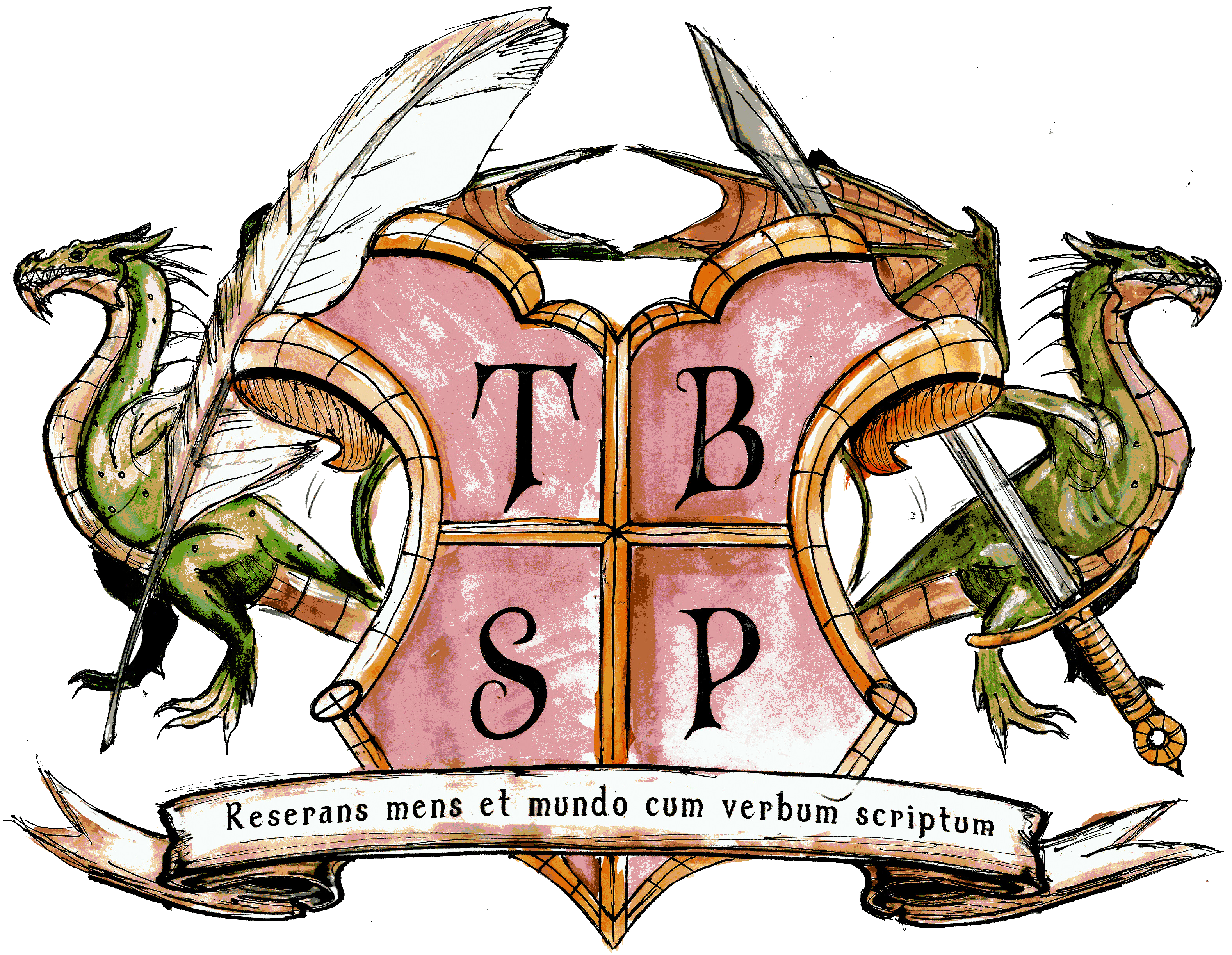








































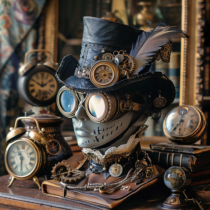
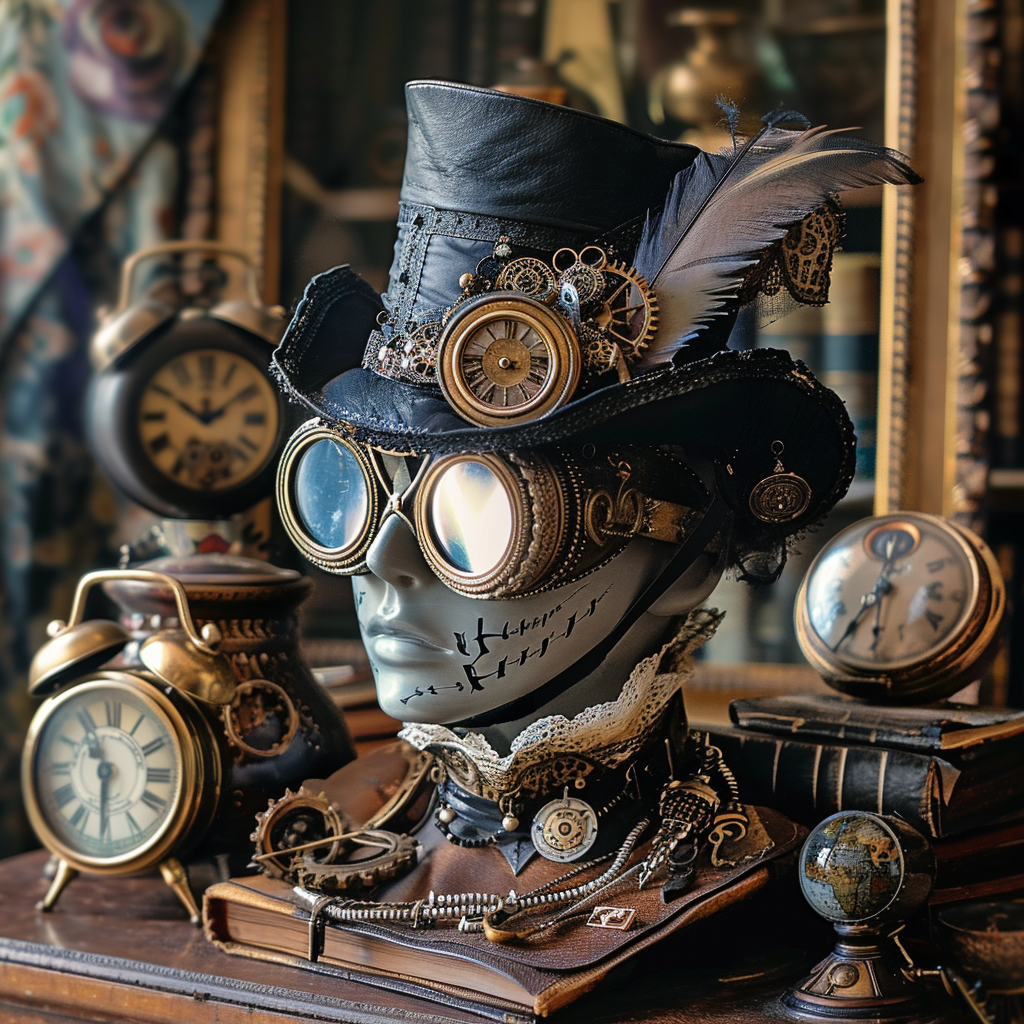
![[Book Cover] Soulless (Parasol Protectorate, Book 1) by Gail Carriger](https://m.media-amazon.com/images/I/81-L4SFyQWL._SL1500_.jpg)
![[Book Cover] Changeless (Parasol Protectorate, Book 2) by Gail Carriger](https://m.media-amazon.com/images/I/818oacaT4hL._SL1500_.jpg)
![[Book Cover] Blameless (Parasol Protectorate, Book 3) by Gail Carriger](https://m.media-amazon.com/images/I/91f1MOQCQGL._SL1500_.jpg)
![[Book Cover] Heartless (Parasol Protectorate, Book 4) by Gail Carriger](https://m.media-amazon.com/images/I/91EulWD11NL._SL1500_.jpg)
![[Book Cover] Timeless (Parasol Protectorate, Book 5) by Gail Carriger](https://m.media-amazon.com/images/I/91m23lH72uL._SL1500_.jpg)
![[Book Cover] Etiquette & Espionage (Finishing School Series Book 1) by Gail Carriger](https://m.media-amazon.com/images/I/91uGLsyPFlL._SL1500_.jpg)
![[Book Cover] Curtsies & Conspiracies (Finishing School Series Book 2) by Gail Carriger](https://m.media-amazon.com/images/I/91UuxadhvSL._SL1500_.jpg)
![[Book Cover] Waistcoats & Weaponry (Finishing School Series Book 3) by Gail Carriger](https://m.media-amazon.com/images/I/91PcOQd-kwL._SL1500_.jpg)
![[Book Cover] Manners & Mutiny (Finishing School Series Book 4) by Gail Carriger](https://m.media-amazon.com/images/I/81idWpFSAqL._SL1500_.jpg)
![[Book Cover] The Golden Compass (His Dark Materials, Book 1) by Philip Pullman](https://m.media-amazon.com/images/I/91tQV6W9A4L._SL1500_.jpg)
![[Book Cover] The Subtle Knife (His Dark Materials, Book 2) by Philip Pullman](https://m.media-amazon.com/images/I/91YhemXdHtL._SL1500_.jpg)
![[Book Cover] The Amber Spyglass (His Dark Materials, Book 3) by Philip Pullman](https://m.media-amazon.com/images/I/81uz9hTqobL._SL1500_.jpg)
![[Book Cover] Leviathan (Leviathan Trilogy, Book 1) by Scott Westerfeld](https://m.media-amazon.com/images/I/91IQYpdIfcL._SL1500_.jpg)
![[Book Cover] Behemoth (Leviathan Triology, Book 2) by Scott Westerfeld](https://m.media-amazon.com/images/I/91onLmSeueL._SL1500_.jpg)
![[Book Cover] Goliath (Leviathan Trilogy, Book 3) by Scott Westerfeld](https://m.media-amazon.com/images/I/91BDj9U7OYL._SL1500_.jpg)
![[Book Cover] The Manual of Aeronautics: An Illustrated Guide to the Leviathan Series by Scott Westerfeld](https://m.media-amazon.com/images/I/A1e-gqCOqvL._SL1500_.jpg)
![[Book Cover] Steampunk! An Anthology of Fantastically Rich and Strange Stories, edited by Kelly Link & Gavin J. Grant](https://m.media-amazon.com/images/I/8155cmc877L._SL1200_.jpg)
![[Book Cover] Queen Victoria's Book of Spells: An Anthology of Gaslamp Fantasy edited by Ellen Datlow & Terri Windling](https://m.media-amazon.com/images/I/81OMb9LtEYL._SL1500_.jpg)
![[Book Cover] SteamDrunks: 101 Steampunk Cocktails and Mixed Drinks by Chris-Rachael Oseland](https://m.media-amazon.com/images/I/71EULHFHbWL._SL1360_.jpg)

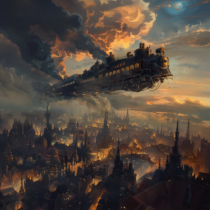
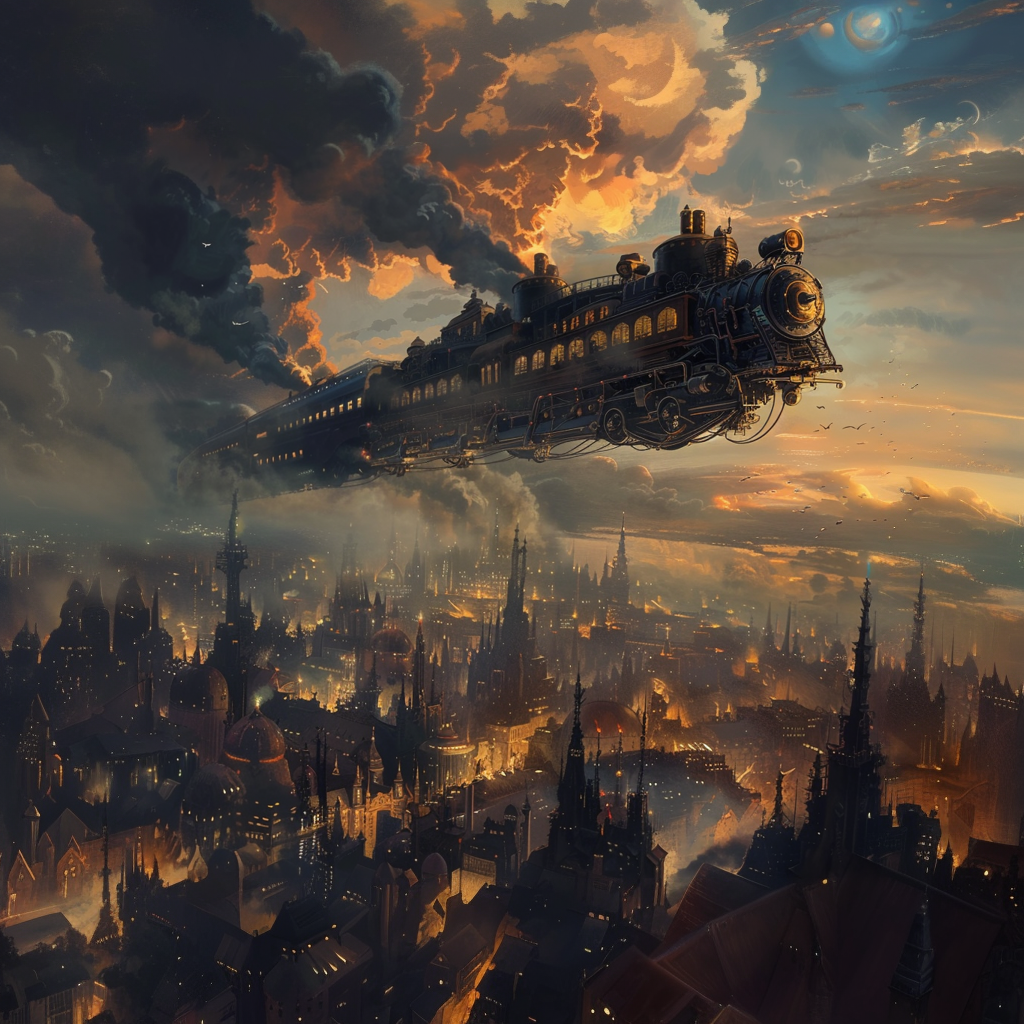






![[BOOK COVER] The Ballad of Songbirds and Snakes (A Hunger Games Novel) by Suzanne Collins](https://m.media-amazon.com/images/I/81EGcrHKG-L._SL1500_.jpg)

















